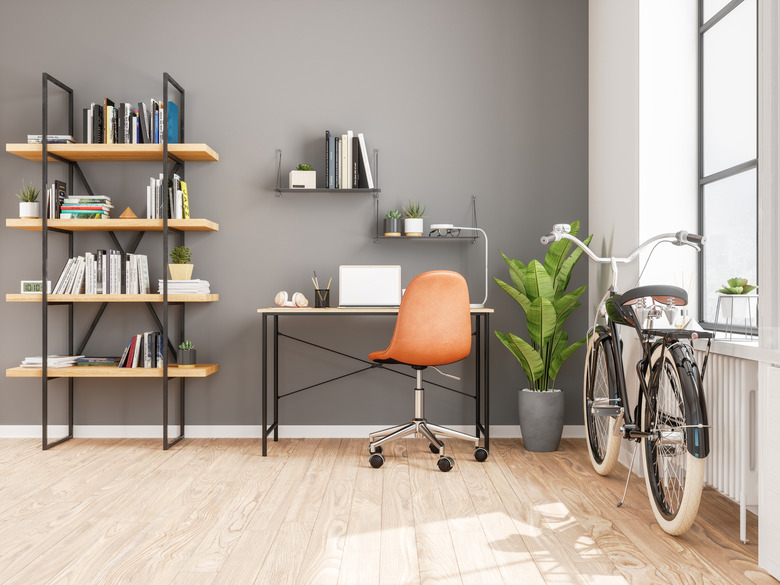How To Balance A Leaning Bookcase
We may receive a commission on purchases made from links.
If you've seen a marble roll across a floor, you realize that floors, walls, and ceilings seem flat but seldom are, which can make furniture wobbly or unstable. This is because over time, buildings settle as the ground compacts, especially in older homes, inevitably leaving floors and walls warped or uneven. It's why fridges and desks often have adjustable feet for leveling. Ladder-style and other leaning bookshelves frequently need old-school tweaking and some patience.
Shims: Solutions for Crooked Surfaces
Shims: Solutions for Crooked Surfaces
Ladder-style or leaning bookshelves have only two points of contact at each end, which may require shimming at the top and bottom. You'll need shims and a level. Shims come in many materials and every color, so nonslip rubber shims are ideal for a leaning shelf, but be sure they're fairly solid rubber that won't compress flat under the bookshelf's weight over time.
Shims are typically angled in a wedge shape to prop up your shelf. Thinner shims can be stacked if necessary, whereas thicker shims may jut out farther than you like, ruining your aesthetic. If you don't need much shimming, err on the thinner side.
Start with the more wobbly side of the bookshelf. Place a shim under that leg and check the level. If it's not yet level, pushing the shim in farther or pulling it out may be sufficient, or you might have to start stacking shims, in which case shimming may not be a stand-alone solution if you have safety in mind.
Anchoring It With a Bracket
Anchoring It With a Bracket
If you don't mind sinking a screw or two into the wall, L-brackets or braces plus shimming are the safest wall-anchoring solution. A small L-bracket (1.5 to 2 inches) bolted into the wall is surprisingly strong. The important thing is to screw the bracket directly into a stud with a 1.5-inch or longer screw, or if you're working between studs, you must install a drywall anchor and then bolt the bracket into that. The protruding part of the bracket just gets bolted into the top of the bookshelf.
If you have children or rambunctious pets or you live in an earthquake zone, then a bracket is the safest route to go. Bracing is only required at the top of the bookshelf, as that will hold it securely in place. This plus shimming can be a rock-solid way to secure your bookshelf. Using a bracket is the IKEA-recommended solution to security shelving too.
Adjustable Feet: A Versatile Solution
Adjustable Feet: A Versatile Solution
No matter your flooring situation, adjustable feet can solve the problem. They work like the feet on stoves and fridges; each adjustable foot is twisted until it's high or low enough to level your item. The annoying part of this is adjusting each leg individually to level the bookshelf. Have a buddy eyeball a level and guide you in your foot-adjustment efforts on the floor.
Self-leveling feet come in various styles, each with different best-case scenarios depending on your kind of bookshelf. Typically, installing feet requires drilling, but it's a simple process. Drill into the bottom center of each leg with a drill bit wide enough for a hole into which you can tap your adjustable foot. While all feet have threading, avoid the threaded-case-style adjustable foot, as these are a more difficult installation that can damage hardwoods.
When buying adjustable feet, keep three things in mind. Load capacity matters, especially for a bookshelf with law books or a heavy cookbook collection. Also, the feet will be visible, so get a style you'll like for years to come. Finally, feet with cork, felt, or rubber pads are needed to protect wood or tile floors.
A Word of Caution
A Word of Caution
If your bookshelf is hardwood, it can split or crack from drilling. Be sure to pre-drill your holes with a small drill bit before escalating to a screw or a wider bit for installing adjustable feet. Start working on a leg at the back of the unit so you can test the wood's integrity. Softwood shouldn't pose problems, but pre-drilling is always the pragmatic DIYer's best bet.
